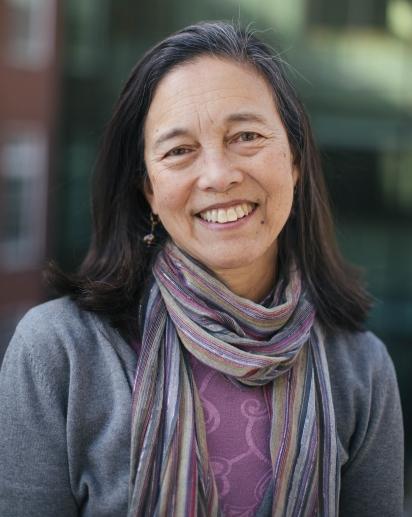Attention and concern have increasingly grown around PFAS – perfluoroalkyl substances – a type of chemical used in consumer products like non-stick cookware, food containers, textiles, and industrial surfactants. These products can have adverse health impacts in people and many are already present in the environment. In New Hampshire, PFAS are found in the Great Bay estuary – introduced from the former Pease Air Force Base and nearby landfills. How these compounds build up and are transferred between animals in a food web is still unclear, and so the risk to humans through seafood is not well known. To help answer this growing question, Celia Chen from Dartmouth College will be assessing levels of PFAS in Great Bay wildlife and measuring transfer of PFAS in laboratory experiments with organisms across the food web, from plankton to fish. Chen’s research will help us understand the risk of PFAS exposure through eating seafood from places like Great Bay.
Principle Investigator

Celia Chen, Ph.D.
Research Professor, Department of Biological Sciences, Dartmouth College
Contact Dr. Chen
Celia.Y.Chen@dartmouth.edu
Project Funding Cycle
2022-2023 NH Sea Grant Biennial Research Funding
Co-Investigators
Thomas Holsen, Ph.D.
Jean S Newell Distinguished Professor of Engineering, Clarkson University
Contact Dr. Holsen
tholsen@clarkson.edu
Sujan Fernando, Ph.D.
Analytical Laboratory Director, Research Assistant Professor, Clarkson University
Contact Dr. Fernando
sfernand@clarkson.edu
Jonathan Petali, Ph.D.
Environmental Toxicologist, New Hampshire Department of Environmental Services
Contact Dr. Petali
jonathan.m.petali@des.nh.gov
Project Abstract
The overall goal of this proposed multi-year study is to investigate the pattern and profiles of per-and polyfluoroalkyl substances (PFAS) bioaccumulated in lower trophic level marine organisms and transferred to higher trophic levels in marine food webs. The proposed approach will utilize field studies in Great Bay estuary, a system that has been contaminated with PFAS from the former Pease Air Force Base and receives inputs from other sources as well. We will 1) conduct field studies to determine PFAS concentrations in sediments and water and in lower trophic level organisms; and 2) conduct laboratory studies using the model organisms, Leptocheirus plumulosus (amphipod) and Fundulus heteroclitus (forage fish), to measure bioaccumulation of PFAS compounds within each species from contaminated sediments across different organic matter treatments. These proposed studies will provide benefits to the state of New Hampshire (NH), the NH Sea Grant stakeholder community, and the scientific community through field and experimental measurements on PFAS bioaccumulation and biomagnification in marine pelagic and benthic organisms that can be used to support future food web modeling.
